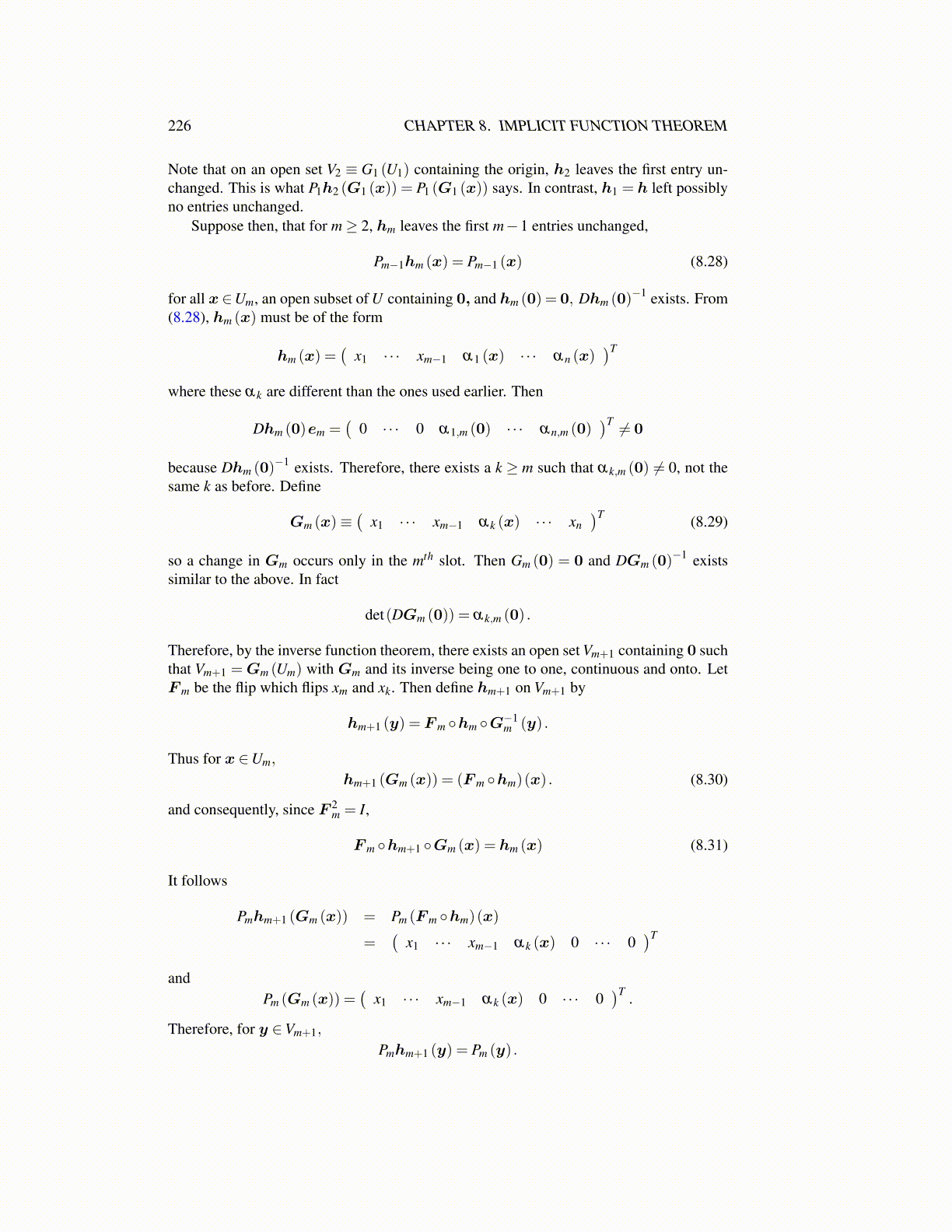
226 CHAPTER 8. IMPLICIT FUNCTION THEOREM
Note that on an open set V2 ≡ G1 (U1) containing the origin, h2 leaves the first entry un-changed. This is what P1h2 (G1 (x)) = P1 (G1 (x)) says. In contrast, h1 = h left possiblyno entries unchanged.
Suppose then, that for m≥ 2, hm leaves the first m−1 entries unchanged,
Pm−1hm (x) = Pm−1 (x) (8.28)
for all x ∈Um, an open subset of U containing 0, and hm (0) = 0, Dhm (0)−1 exists. From(8.28), hm (x) must be of the form
hm (x) =(
x1 · · · xm−1 α1 (x) · · · αn (x))T
where these αk are different than the ones used earlier. Then
Dhm (0)em =(
0 · · · 0 α1,m (0) · · · αn,m (0))T ̸= 0
because Dhm (0)−1 exists. Therefore, there exists a k ≥ m such that αk,m (0) ̸= 0, not thesame k as before. Define
Gm (x)≡(
x1 · · · xm−1 αk (x) · · · xn)T (8.29)
so a change in Gm occurs only in the mth slot. Then Gm (0) = 0 and DGm (0)−1 existssimilar to the above. In fact
det(DGm (0)) = αk,m (0) .
Therefore, by the inverse function theorem, there exists an open set Vm+1 containing 0 suchthat Vm+1 =Gm (Um) with Gm and its inverse being one to one, continuous and onto. LetFm be the flip which flips xm and xk. Then define hm+1 on Vm+1 by
hm+1 (y) = Fm ◦hm ◦G−1m (y) .
Thus for x ∈Um,
hm+1 (Gm (x)) = (Fm ◦hm)(x) . (8.30)
and consequently, since F 2m = I,
Fm ◦hm+1 ◦Gm (x) = hm (x) (8.31)
It follows
Pmhm+1 (Gm (x)) = Pm (Fm ◦hm)(x)
=(
x1 · · · xm−1 αk (x) 0 · · · 0)T
andPm (Gm (x)) =
(x1 · · · xm−1 αk (x) 0 · · · 0
)T.
Therefore, for y ∈Vm+1,
Pmhm+1 (y) = Pm (y) .